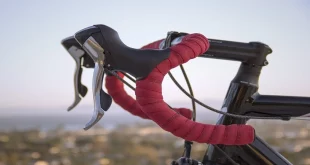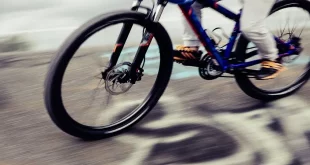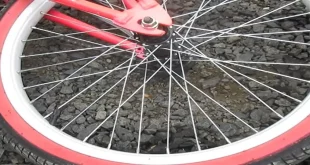Bike saddles are uncomfortable due to inadequate padding and improper fit, causing pressure and friction on sensitive areas. Riding a bicycle should be a comfortable and enjoyable experience, but many cyclists struggle with discomfort and pain in their bike saddles.
This discomfort stems from two main factors: inadequate padding and improper fit. Bike saddles often lack sufficient padding to provide cushioning and support for the rider, leading to pressure and friction on sensitive areas. Additionally, improper fit can also contribute to discomfort as it results in an unnatural posture and puts unnecessary strain on the body.
As a result, cyclists may experience pain, numbness, and even sores from extended periods of riding. Understanding the factors contributing to uncomfortable bike saddles can help cyclists choose the right saddle and make necessary adjustments for a more pleasant riding experience.
Understanding The Anatomy Of A Bike Saddle
If you’ve ever embarked on a long bike ride, you’re likely familiar with the discomfort that can come from your bike saddle. But have you ever wondered why bike saddles can be so uncomfortable? Let’s take a closer look at the anatomy of a bike saddle and how its design, shape, and materials play a role in comfort and support.
Role Of Bike Saddles In Providing Comfort And Support
When it comes to bike saddles, comfort and support are the two key factors that riders seek. Here’s a breakdown of how bike saddles fulfill these roles:
- Support: Bike saddles are designed to provide support for your sit bones, which are the bony structures at the base of your pelvis. The shape and cushioning of the saddle are crucial in distributing your weight evenly and reducing pressure on sensitive areas.
- Comfort: Bike saddles aim to provide a comfortable riding experience by minimizing friction and chafing. The padding and materials used in the construction of the saddle play a vital role in ensuring a smooth and plush surface for your posterior.
How The Shape And Design Impact Comfort
The shape and design of a bike saddle can greatly impact your comfort level on the bike. Here are some key points to consider:
- Width: Bike saddles come in various widths to accommodate different body types. A saddle that is too narrow can result in discomfort and pinching, while a saddle that is too wide may cause excessive rubbing and discomfort on the inner thighs.
- Cutouts and grooves: Many modern bike saddles feature cutouts or grooves in the center to relieve pressure on the perineal area. These design elements help to improve blood flow and reduce numbness and discomfort during long rides.
- Nose shape: The shape of the saddle’s nose can also affect comfort. Some riders prefer a saddle with a more rounded or squared-off nose, while others find a more tapered nose to be more comfortable, depending on their riding style and preference.
Materials Used In Making Bike Saddles And Their Effect On Comfort
The materials used in the construction of a bike saddle have a significant impact on overall comfort and support. Here’s a breakdown of commonly used materials and their effects:
- Padding: The padding in a bike saddle is responsible for providing cushioning and shock absorption. Different saddles may use varying densities and thicknesses of foam or gel padding to provide the desired level of comfort.
- Cover material: The cover material of the saddle affects its durability, grip, and breathability. Synthetic materials like microfiber and nylon are commonly used due to their durability and ability to wick away moisture.
- Rails: The rails of the saddle, which connect it to the seat post, can be made from materials like steel, titanium, or carbon fiber. The choice of rails affects the weight, strength, and flexibility of the saddle.
The discomfort experienced with bike saddles can be attributed to various factors related to their anatomy. Understanding how comfort and support are provided, along with the impact of shape, design, and materials, can help cyclists find a saddle that suits their individual needs and enhances their overall riding experience.
Factors Contributing To Discomfort In Bike Saddles
Bike saddles are often the culprit behind the discomfort that riders experience during and after a ride. A poorly designed or ill-fitting saddle can lead to discomfort, pain, and even injuries. Understanding the factors that contribute to saddle discomfort can help riders find solutions and enhance their overall cycling experience.
Pressure Points And Their Impact On Comfort
When riding a bike, pressure points are areas where the body’s weight is concentrated on the saddle. These pressure points can cause discomfort and pain over time due to the prolonged pressure and lack of proper blood circulation. Here are some key points to consider:
- Pressure points are usually found in the sit bones, perineal area, and soft tissues.
- Prolonged pressure on these areas can lead to pain, numbness, and even tingling sensations.
- Nerve compression and restricted blood flow are often the culprits behind discomfort.
- The type of saddle, padding, and material can affect pressure distribution and alleviate discomfort.
Importance Of Proper Bike Saddle Fit
Proper saddle fit is essential for comfort and overall riding experience. A saddle that is too narrow or too wide can lead to discomfort and potential injuries. Consider the following key points:
- A saddle should match the width of your sit bones to provide adequate support and distribute your weight evenly.
- Saddle height and angle also play a crucial role in ensuring proper fit and comfort.
- Riders with different anatomies may need different saddle shapes to achieve optimal fit.
- Professional bike fitting services can help determine the best saddle fit for your body type and riding style.
Different Types Of Discomfort Experienced By Riders
Riders can experience various types of discomfort when using bike saddles. Understanding these different types can help identify the cause and potential solutions. Here are some common discomforts:
- Saddle sores: Painful, inflamed areas caused by friction and pressure on the skin.
- Numbness: A loss of sensation often due to pressure on nerves or restricted blood flow.
- Chafing: Skin irritation and abrasion caused by repetitive rubbing against the saddle.
- Lower back pain: Improper saddle fit can contribute to lower back discomfort.
By addressing the factors that contribute to discomfort in bike saddles, riders can take steps to alleviate pain and enhance their overall riding experience. Considering pressure points, saddle fit, and identifying different types of discomfort can help cyclists find suitable solutions tailored to their specific needs.
Addressing Discomfort: Tips And Solutions For A Comfortable Ride
Have you ever experienced discomfort while riding your bike? If so, you’re not alone. Many cyclists struggle with discomfort, particularly when it comes to bike saddles. But why are bike saddles so uncomfortable, and what can be done about it?
In this section, we’ll take a closer look at the issue of saddle discomfort and explore some tips and solutions to help you enjoy a more comfortable ride.
Importance Of Bike Fit And Adjustments
Ensuring proper bike fit is crucial for a comfortable ride. Here’s why:
- A poorly adjusted bike can put unnecessary pressure on certain areas, leading to discomfort.
- Proper bike fit helps distribute your weight more evenly across the saddle, reducing pressure points.
- Consider getting a professional bike fit to ensure everything is set up correctly.
Choosing The Right Saddle For Your Riding Style
Selecting the right saddle can make a significant difference in your riding comfort. Consider the following points:
- Determine your riding style: Different types of saddles are designed for specific riding styles, such as road biking, mountain biking, or touring.
- Consider your body shape: Saddles come in various widths and shapes. Find one that matches your anatomy to help prevent discomfort.
- Test before purchasing: Try out different saddles to see which one feels most comfortable for you. Some bike shops even provide saddle loaner programs.
Utilizing Bike Accessories To Enhance Comfort
Apart from choosing the right saddle, there are other accessories that can improve your overall riding comfort:
- Padded shorts or bibs: Wearing padded shorts can provide extra cushioning and reduce friction, enhancing comfort during longer rides.
- Gel seat covers: These accessories can be added to your saddle to provide additional cushioning, reducing discomfort caused by pressure points.
- Suspension seatposts: If you frequently ride on rough terrain, a suspension seatpost can absorb shocks, providing a smoother and more comfortable ride.
Remember, finding the right combination of bike fit, saddle, and accessories might take some trial and error. Be patient and experiment until you find what works best for you. By addressing discomfort and making necessary adjustments, you’ll be able to enjoy your rides more comfortably and for longer durations.
Frequently Asked Questions On Why Are Bike Saddles So Uncomfortable?
Why Do Bike Saddles Cause Discomfort?
Bike saddles can be uncomfortable due to their design, which puts pressure on sensitive areas. This can lead to numbness, pain, and soreness during and after rides. Factors like saddle shape, padding, and improper fit can also contribute to discomfort.
How Can I Make My Bike Saddle More Comfortable?
To make your bike saddle more comfortable, try adjusting the tilt, height, and fore-aft position of the saddle to find the right fit. Consider investing in a saddle with appropriate padding and shape for your riding style. Wearing padded cycling shorts and using a gel seat cover can also provide added comfort.
What Is The Best Bike Saddle For Comfort?
The best bike saddle for comfort varies depending on individual preferences and body anatomy. However, saddles with adequate padding, a supportive shape, and a cutout or groove to relieve pressure on sensitive areas are generally considered more comfortable. It’s important to try different saddles and find one that suits your unique needs and riding style.
Conclusion
Overall, the discomfort experienced while riding a bike can be largely attributed to the design and construction of bike saddles. With little consideration for individual anatomies and preferences, most generic bike saddles fail to provide the necessary support and comfort for riders.
The lack of proper padding, inadequate shape, and poor quality materials further exacerbate the discomfort. However, there are solutions available to alleviate this problem. By investing in a well-fitted saddle that suits your body type and riding style, you can significantly improve your biking experience.
Additionally, consider incorporating padded shorts or seat covers to add an extra layer of cushioning. Regular maintenance and adjustments to your saddle position can also help optimize your comfort level. By prioritizing comfort and making informed decisions, you can enjoy your cycling adventures free from unnecessary pain and discomfort.
 CommutingLife Explore The World On Two Wheels
CommutingLife Explore The World On Two Wheels





